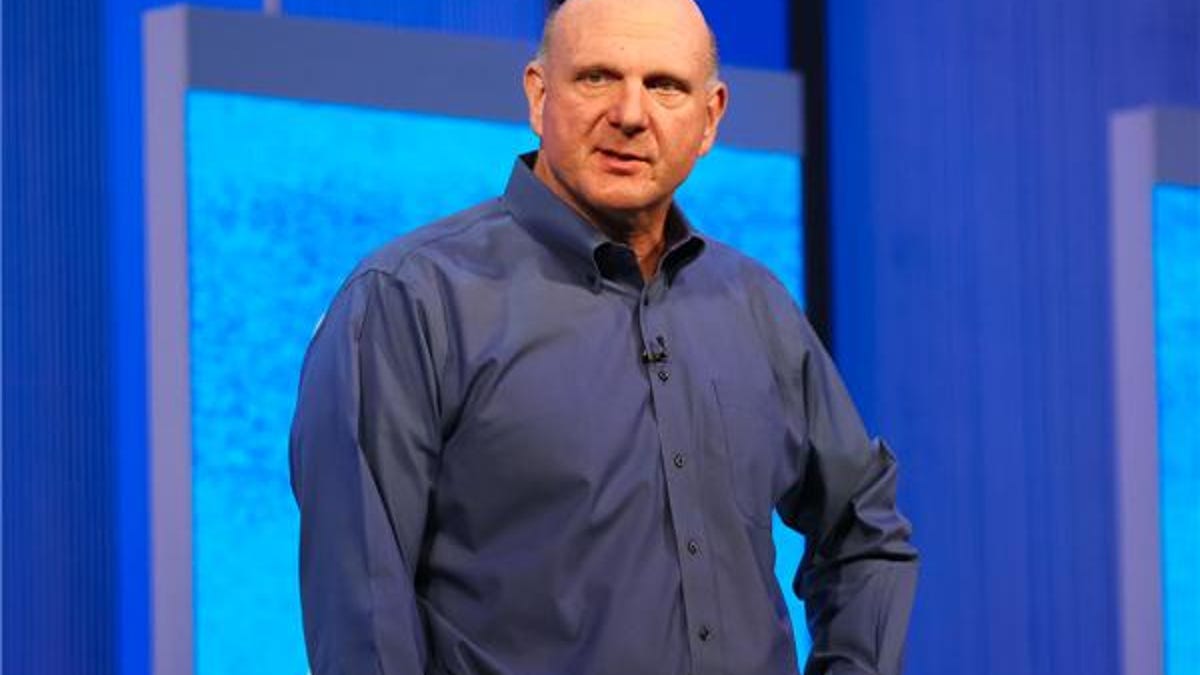Ballmer's latest pitch to the faithful: Wide of the mark?
CEO Steve Ballmer made the case that Microsoft can be all things to all people, but that argument fell short when his Build 2013 keynote couldn't stick its landing.

Steve Ballmer's not a man given to standing still on stage for long, but for a brief moment Wednesday morning, he struck a pose in front of some of the most devoted Microsoft developers with his left arm jackknifed, hand on hip.
It was a pugnacious posture, defiant yet also expressing confidence in Microsoft's public rebuilding of Windows. Microsoft's chief executive made the case at Build 2013 that while things may not always be smooth, the company was heading in the right direction.
Ballmer emphasized a new philosophy at Microsoft, offering up what he termed a "rapid product release cadence." That refrain almost identically mirrors the "rapid-release cycle" language that Google, and then Mozilla, adopted a few years ago to describe their six-week browser update paths. For Microsoft, he said, this meant a more nimble approach to updates in its ecosystem.
"We're transitioning from a software company to a company that's building software, devices and services," he said, describing the transition as "fundamental" to the future of the company. It's why Windows 8.1 will be available to the public soon, less than a year after the operating system debuted amidst a PC revamp that relied heavily on touch screens.
It's a big claim but this was a keynote speech, after all, a venue in which executives try to articulate big, albeit general, themes. But how then to square that with the rest of Ballmer's presentation from the first day of Microsoft's developer's conference, which lacked the coherence to sell that mandate?
The keynote was hamstrung from the beginning, as the morning's focus -- the official public debut of Windows 8.1 -- had been spoiled by leaks over the preceding months. What's more, the actual news that got announced amounted to little more than thin gruel for breakfast, as Ballmer and his compatriots warmed up what we already knew.
The update to the operating system would include a boot-to-Desktop option; a variant of the Start button would return to the Desktop taskbar; multiple monitor support would be dramatically improved; and IE11 would tack left and finally work with WebGL and SPDY.
Certainly, there is much more in Windows 8.1. But the point is that as a demonstration of the might of the reborn Windows, Wednesday morning could've been better orchestrated. The more Microsoft fumbles its message, the less patient the public will be for the products the pitch is attempting to sell.
Ballmer described the heavily-requested enhancements to the Desktop mode as a "refined blend," but the caffeine provided by Julie Larson-Green, now running the Windows division in the post-Steve Sinofsky world, barely stirred the crowd.
She called down the lightning and zipped through her lengthy demo, touching on everything from the Nook app to Twitter to the soft keyboard to Mail app improvements from months ago to adding contextual search to the Search charm.
When I wrote CNET's review of Windows 8 last August, one of my big concerns was that Microsoft didn't spend enough time demonstrating how to use the new interface. That didn't change during the Build keynote, as the on-stage execs favored snippets of info over lengthier but more informative demos.
Following Larson-Green, Microsoft's Antoine Leblond, the vice president in charge of Windows Web Services, gave a demo of how the new Visual Studio 2013 can help developers build good apps for Windows 8. Not even the gathered developing class mustered much enthusiasm for being shown code onstage. It was far nerdier than the nerdiest moment of Google I/O, which again distracted from whatever the point of the keynote had been. On message, this was not.
Microsoft faces enormous challenges getting both casual consumers and developers on board. It's struggling to woo the Windows 7 home consumer with an adequate Windows 8 tutorial. Also, it's taken ages to get a major Microsoft partner like Facebook to contribute an app that's on every other mobile operating system. None of this bodes well for the future of Windows, even if Ballmer is right and the Windows Store is about to crest 100,000 apps.
While Twitter jumped on the Windows 8 bandwagon early, the hesitation -- or at the least, deliberation -- from other major developers, such as the browser makers or Instagram, indicates that something smells funky with this OS. There's still not a single "killer app" for the new Windows, something that takes the potential of the desktop-level hardware and merges it with an immersive, mobile-style experience.
Cool new features like gesture control via webcam were buried deep in the keynote, and given the same amount of time as a rushed Xbox One demo that came and went without any reaction from the audience.
Ballmer may have started the keynote off with a strong mandate, but the narrative Microsoft created didn't stick to it. It was only at the end, with Ballmer returning to demo Project Spark's cross-platform game creation tools, when we got a more explicit "software, devices, services" pitch.
Windows 8.1 seems like it's an excellent and necessary upgrade to the operating system, one that ought to be a boon for Windows developers. Now it's on Ballmer to convince people about the new Microsoft and its dramatically different flagship product. It shouldn't be long before we know whether his stage confidence was indeed for real.

